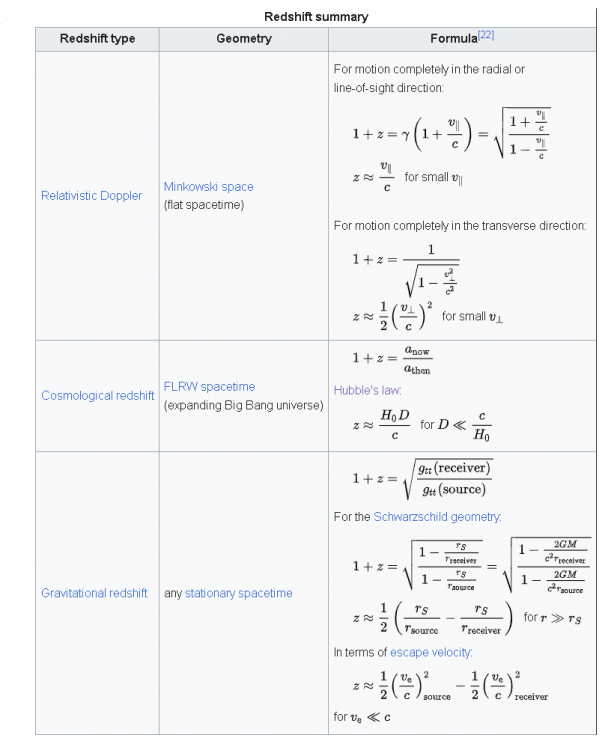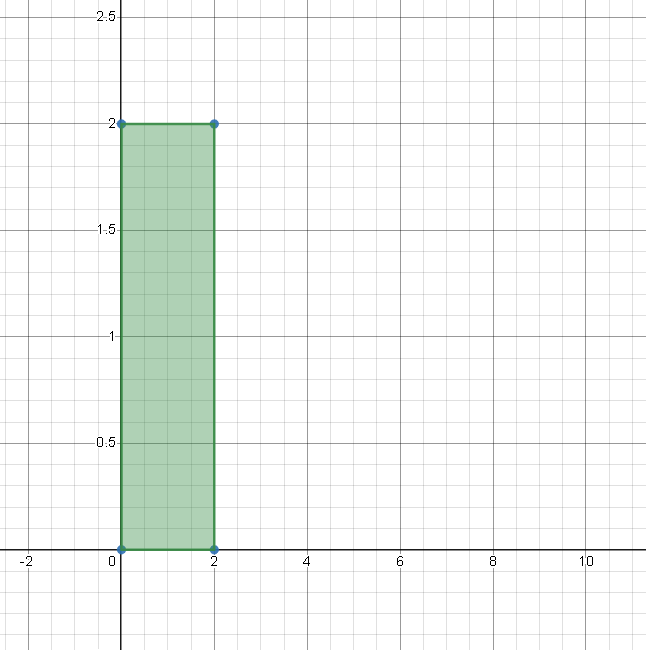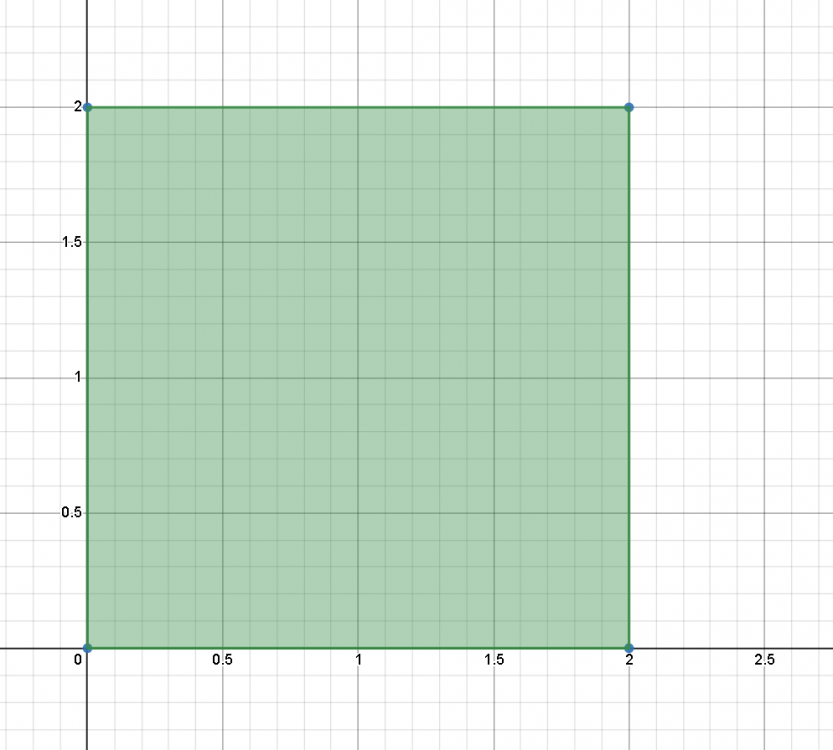-
Posts
331 -
Joined
-
Last visited
AbstractDreamer's Achievements

Atom (5/13)
15
Reputation
-

Space Expansion, wavelength and energy density
AbstractDreamer replied to AbstractDreamer's topic in Astronomy and Cosmology
Anyone else have any comments? -

Cosmological Redshift and metric expansion
AbstractDreamer replied to AbstractDreamer's topic in Astronomy and Cosmology
I not going to pretend to follow the math. Neither do I want to interrupt where the thread has gone, but I want to bring it back layman speak on my level. Earlier in this thread I did already mention that the FLRW metric is "orientated" where time does not expand with space. I had suspected that a transformation could orientate it differently such that time does expand with space. And I suspected at the other extreme we can have a solution where space does not expand at all and only time does. In another thread I asked about a variable "metric of time", and the "rate of flow of time", which was very difficult to conceptualise and it sort of ended there. My position is that l still maintain the validity of the interpretation that: non-relative time expansion/contraction is indistinguishable from space expansion/contraction. When you look up cosmological redshift in wiki there is no "Temporal Redshift" type. That is, redshift caused by an expanding temporal metric. It doesn't exist. Not a single reference, no studies, no papers. Why? Just because its too complex and abstract compared to space-expansion-only theory? I don't believe complexity is a reason for the entire physics community to shy away from such an interpretation. If it is valid, and no-one has researched into temporal redshift, it can only be because "space expansion" and its universal acceptance has blinded us to the truth that is only one alternative of other interpretations. -

Cosmological Redshift and metric expansion
AbstractDreamer replied to AbstractDreamer's topic in Astronomy and Cosmology
But why does the FLRW solution assume that "only the spatial part of the metric is non-trivial and carries an expansion factor, there is no time dilation in this cosmological spacetime." On what basis and evidence independent of this assumption do we have that this disposition is true. Why is it only the spatial metric and not the temporal metric that expands in the case of cosmological scale? The FLRW solution contains within it the Hubble constant. The constant describes adiabatic space expansion. We cant then use the FLRW solution to justify that space expansion exists, because it is a solution that requires it to exist! Newton's law of gravitation solution does not prove that gravity is force. It is a solution that requires a force he called gravity. "The Friedmann–Lemaître–Robertson–Walker metric (FLRW; /ˈfriːdmən ləˈmɛtrə ... /) is a metric based on the exact solution of the Einstein field equations of general relativity. The metric describes a homogeneous, isotropic, expanding (or otherwise, contracting) universe that is path-connected, but not necessarily simply connected" from Wiki It is describing an expanding universe. In other words, as it's premises it pre-assumes that the universe is homogenous, isotropic and expanding. I'm not denying that any observations that subsequently fit the model certainly support the assumptions. And I'm in no way suggesting there is no space expansion at all. But what about observations that don't fit the model such as data from the JWST? The lamba-CDM model also uses the Hubble constant presumably derived from the FLRW metric. Again, it premises that space expands. A derivation cannot prove a premise. A geocentric theory does not prove the sun circles around the earth, because it already assumes it does. We can also add arbitrary complex formulas to make the geocentrism fit new conflicting data such as retrograde precession, just as we can add new mechanisms such as dark energy to make an expanding universe fit redshift and other observations. CMBR polarisation suggests some space expansion occurred. And we can arbitrarily parametise a formula to fit exactly what we observe and fit how we understand things work. But making everything fit comes with the danger of confirmation bias, especially when the fit is arbitrary. If there are any other mechanisms that we don't understand or haven't yet identified, then making things fit will with certainty blind us to those mechanisms. Gravitation waves being stretched also fits an assumption of space expansion in the same way as redshifted EM spectra, but the same argument stands. Why can some unknown from of time dilation not also contribute to gravitation wave stretching - why must all stretching of gravitational waves be solely caused by space expansion, other than it nicely fits the FLRW metric which is already orientated to only the spatial metric expanding. Large-scale structure patterns tell us of space expansion vs gravity vs time. Most theories support the idea of a "force" (dark energy) that counteracts gravity to give us the patterns we see today. Again we can arbitrarily parametise a formula to fit what we observe with how we understand things, which in this case is: something (dark energy) is working against gravity, and it does so at different rates depending on when (time). But why is all dark energy due to space expansion? Just because we have a solution that takes the position of "only the spatial part of the metric carries an expansion factor"? So if we are using large-scale structure as evidence for only space expansion, that is a fallacy of circular logic: "Given a solution where only the space metric expands (FLRW), then... ...only space expands" Well of course! It's already given! I have no response regarding acoustic baryonic oscillations and BB nucleosynthesis right now as I have no understanding at all on those topics. But evidence for gravity as a force does not refute gravity as spacetime curvature. In the same way, observations that fit space expansion does not specifically refute other mechanisms. On the other hand there is quite a lot of refuting evidence against Lamda CDM especially since JWST. Again, we go back to Hubble's law and cosmological redshift, as the only empirical data source that is not derived from the FLRW premise that only the spatial metric expands, or derived from a parametisation of that metric Why is there a 1:1 causal link between redshift and space expansion and 1:0 (zero) causal link with redshift and time dilation, when we know it is a single spacetime manifold? What empirical evidence did Hubble and Lemaitre have in 1920 to believe only space expansion and not time dilation causes redshift. Why does the FLWR metric choose that only the spatial metric and not the temporal metric expands? -

Cosmological Redshift and metric expansion
AbstractDreamer replied to AbstractDreamer's topic in Astronomy and Cosmology
Why would we expect to see blueshifting? We theorised space expansion from the discovery of cosmological redshift. Not the other way around. If cosmological redshift had some other cause, it wouldn't change what we measure at all. It would change our theory. According the Hubble-Lemaitre law, yes it is correlated to distance. But why does the Hubble-Lemaitre law attribute 100% of observable cosmological redshift to space expansion, and 0% attributed to cosmological time dilation? Where is the evidence that cosmological time dilation does not exist? Before cosmological redshift, there was no such thing as either space expansion or cosmological time dilation. After we discovered cosmological redshift, space expansion was accepted/invented/theorised, but why not "cosmological time dilation"? As far as I have read, redshift IS the only source data point. Space expansion was theorised from discovering the redshift. All other data points derive from the theory. We can't use a derivation to prove a premise. Hubbles law: v = H0D Why can't it be v = H0D-PDT Where T is the proper time difference and PD is a constant of proportionality of T which can change over relative proper distance. In the Hubble=Lemaitre law, T simply has the value of zero. So yes the further away something is, the faster it is receding, necessarily reaching superluminal velocities above certain distances. If T has a non zero then it could be that the further away something is, the faster or slower time is ticking where they are relative to the observer, instead of receding faster, potentially never breaking the limit of c, but not necessarily so. -

Cosmological Redshift and metric expansion
AbstractDreamer replied to AbstractDreamer's topic in Astronomy and Cosmology
My point is not about refuting kinematic interpretation of redshift. A phenomenon of space expanding would certainly cause the cosmological redshift observations that we measure. This does not mean cosmological redshift observations are entirely and completely explained by space expansion. If we measure a redshift of 3, why must the entirety of that redshift be caused by space expansion and nothing else? What evidence do we have that nothing else causes cosmological redshift? -

Cosmological Redshift and metric expansion
AbstractDreamer replied to AbstractDreamer's topic in Astronomy and Cosmology
I'm not entirely certain what I mean by volume. I have two thoughts. Firstly, it is the "space expansion", whatever "space" or "volume" it is that is expanding. So I'm guessing the kinematic interpretation of redshift suggests only a 3volumes expansion, and the (at least partly) gravitational interpretation suggests a 4-volume expansion. But the accepted interpretation is kinematic only - a 3volume expansion? Secondly it is about temperature. Mordred mentioned "increasing volume": I don't know what he means by volume here. I guess its 3-volume space. -

Space Expansion, wavelength and energy density
AbstractDreamer replied to AbstractDreamer's topic in Astronomy and Cosmology
So rulers do not expand. Great. So what?- 7 replies
-
-2
-

Space Expansion, wavelength and energy density
AbstractDreamer replied to AbstractDreamer's topic in Astronomy and Cosmology
-1 for irrelevance. You quoted half a line and took it out of context to troll a response that has no context to my original text, with no intent other than to derail my topic with graffiti. I mean if you read my post you'd realise the expansion is present in the wavelength of a photon. And if the photon wavelength is the ruler, and the wavelength has expanded, then the ruler has expanded.- 7 replies
-
-2
-

Cosmological Redshift and metric expansion
AbstractDreamer replied to AbstractDreamer's topic in Astronomy and Cosmology
Exactly you're wrong and just trolling.- 79 replies
-
-3
-

Cosmological Redshift and metric expansion
AbstractDreamer replied to AbstractDreamer's topic in Astronomy and Cosmology
Define "closer" -

Cosmological Redshift and metric expansion
AbstractDreamer replied to AbstractDreamer's topic in Astronomy and Cosmology
Neither. As neither axes have any values other than zero. In this manifold, zero is the only value that can be taken. Everything has the value zero. -
AbstractDreamer started following Space Expansion, wavelength and energy density
-
How exactly does the expansion of space result in the lengthening of the wavelength of a photon? So you have a tiny photon in superposition with regards to its position and momentum travelling through spacetime for 13 billion years. An excitation propagating through the EM quantum field. Presumably the field is stretched by expansion, but the photon at any moment is a point. So how do the properties of the photon get stretched when it is just a point in the field? Unless the photon isnt a point, and is a line? And if it is a line, then space expansion doesnt occur at any instant but rather over a period? If a volume experiences space expansion, how do you measure the increase in volume from inside the volume? I'm guessing you cant because any ruler you have will expand with the volume. I'm guessing from inside the volume, there is no measurable increase in volume. If a volume experiences space expansion, how do you measure the increase in volume from outside the volume? Assuming, for any observer outside the volume, in order to be able to measure a redshifted photon that exceeds the speed of light you have to be sufficiently far away in spacetime such that the observer and the volume do not share a valid local reference frame. If there is no valid local frame of reference, how do we measure its volume? If there is no increase in volume locally, and you cannot measure the volume from outside, how does space expansion increase volume and result in lower average energy density?
-

Cosmological Redshift and metric expansion
AbstractDreamer replied to AbstractDreamer's topic in Astronomy and Cosmology
You're very wrong. Coordinates are sufficient for comparison. 2<3. Two is less than Three. You don't need any units of meters, seconds, degrees or apples, square roots or coloured pixels. Wrong again. The number of coloured pixels are the same in both, even if you use a metric of number of coloured pixels. Count them. There are 4 pixels in both. The difference between the pixels in both vertical and horiztonal direction are also the same. There are two pixels in the vertical direction for both, and 2 pixels in the horizontal directions for both. Your mistake is assuming the grid lines have significance. They dont. Only the numbers on the axes have meaning. Labelling with units is irrelevant. Which number is bigger? The number 2 or the number 3? -

Cosmological Redshift and metric expansion
AbstractDreamer replied to AbstractDreamer's topic in Astronomy and Cosmology
I'm asking which has bigger volume, not how big their volumes are according to some metric. You don't need a metric to compare volumes, if the coordinate systems are the same, which they are. The point is stretching axes doesn't change magnitude whatever metric you are using, and so space expansion doesn't change volume. Both objects are 2x2 square units, and internally consistent with that shape and magnitude - no matter how much an observer stretches the axes, inside the polygon you will never notice any difference. If you are arguing that space expansion increases volume, then you are saying the square has larger volume than the rectangle, because I changed the magnification and zoomed in significantly on the x-axis. So then your position is that the volume of each green polygon is a property of the observer and not the polygon. Space does not have to expand at all. That's the whole point of that paper. Cosmological redshift does not have to interpreted as due kinematic Doppler shift. -

Cosmological Redshift and metric expansion
AbstractDreamer replied to AbstractDreamer's topic in Astronomy and Cosmology







